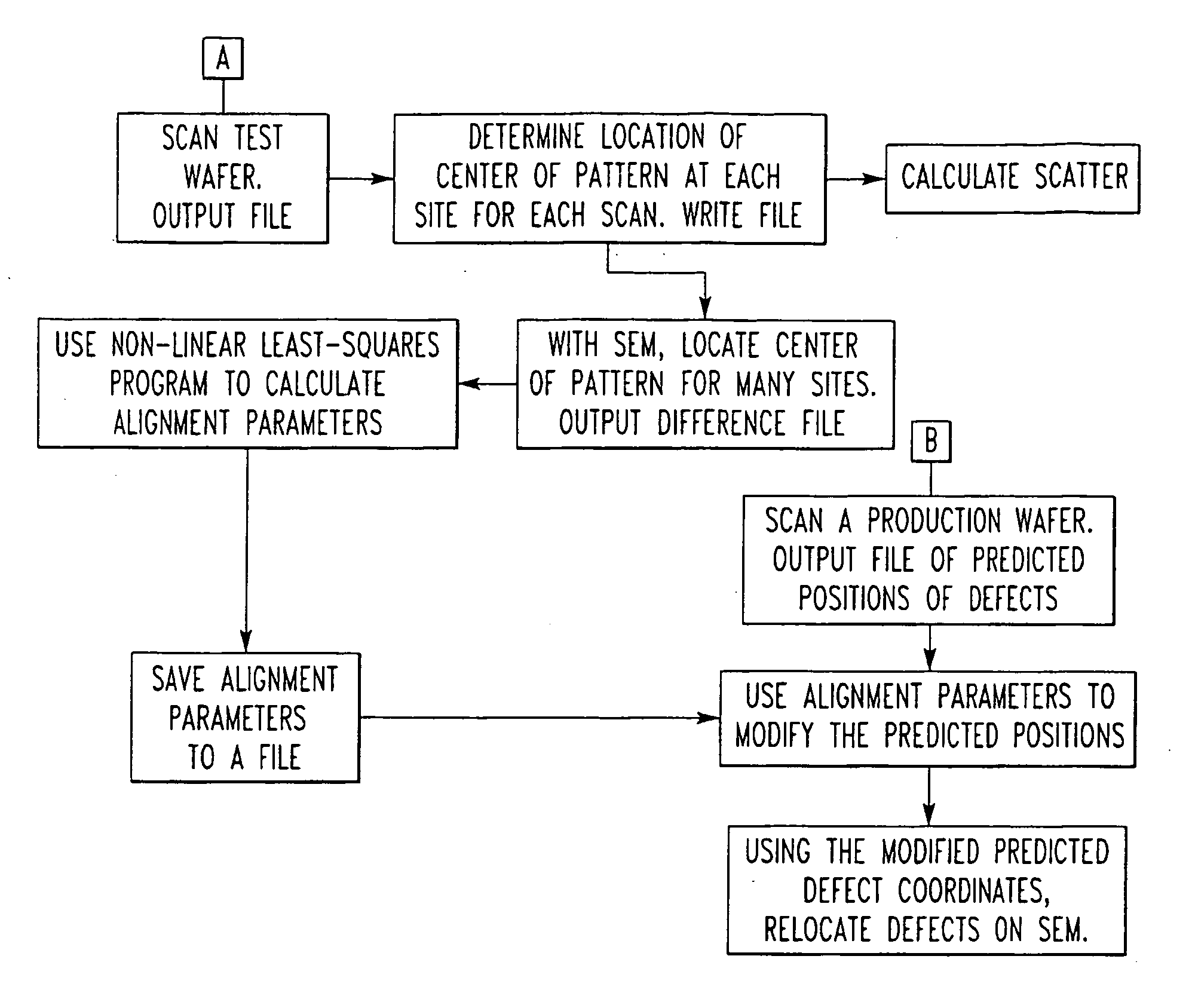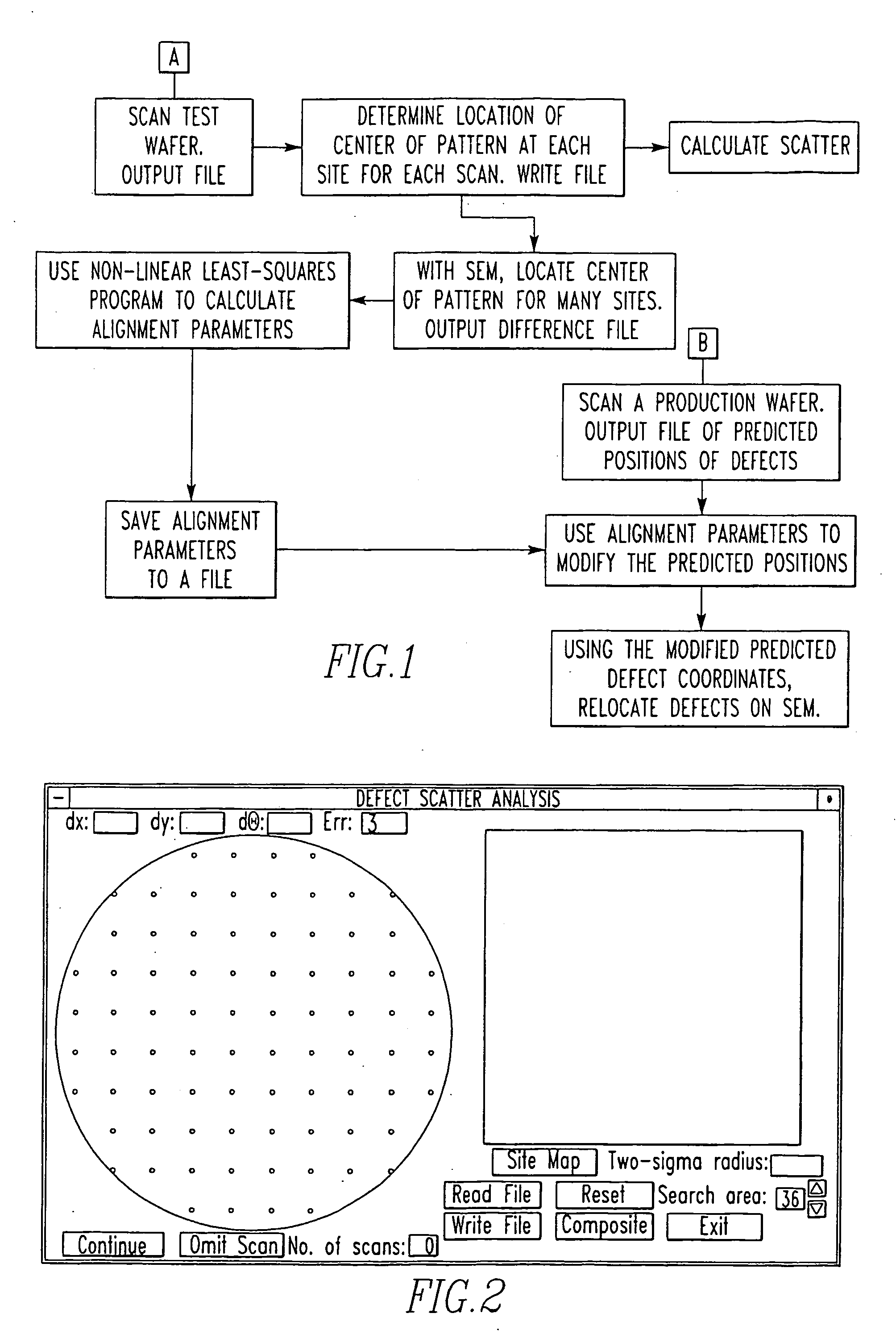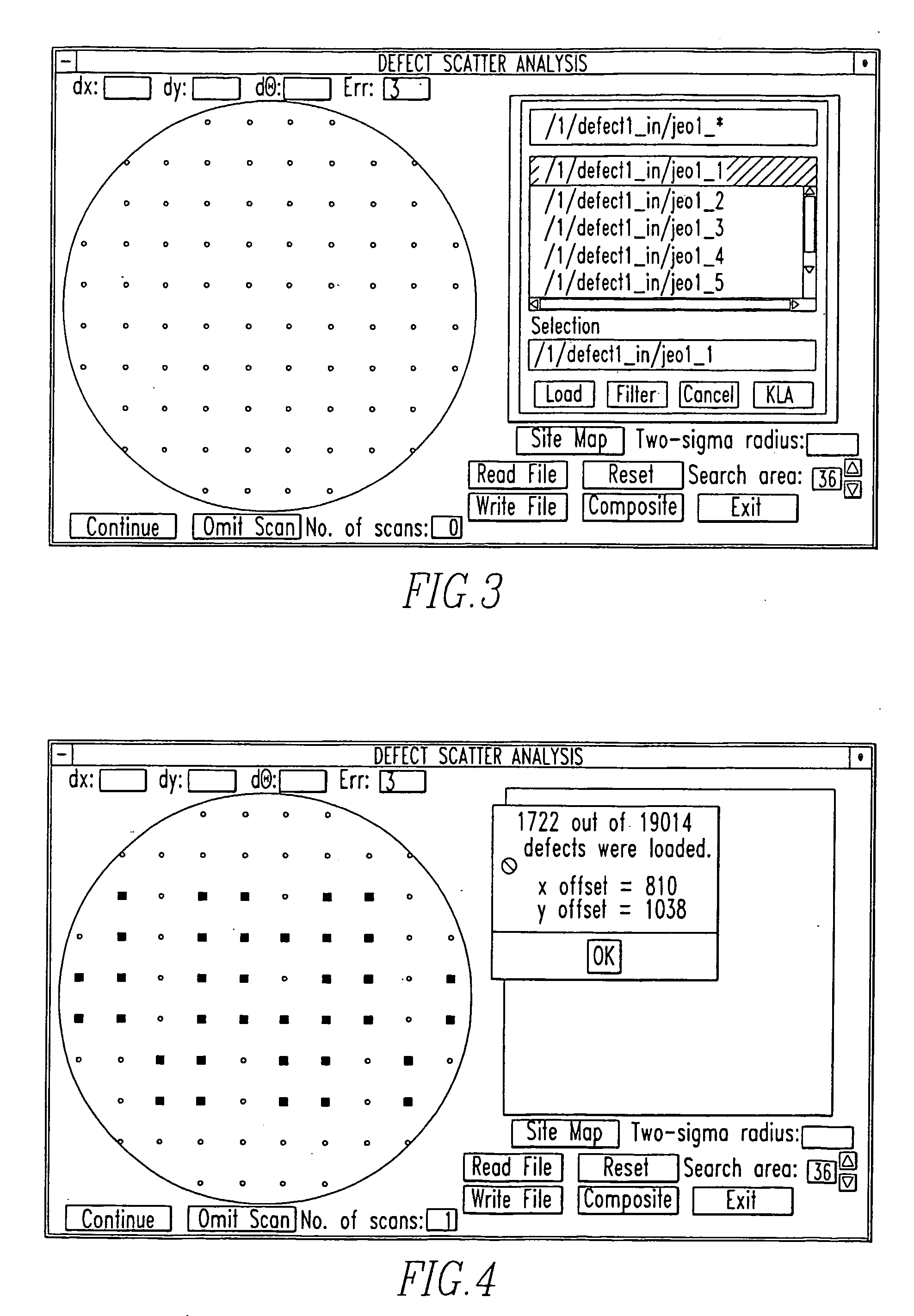Method for detection and relocation of wafer defects
a technology of defect detection and defect relocation, applied in the direction of individual semiconductor device testing, semiconductor/solid-state device testing/measurement, instruments, etc., can solve the problems of defect often occurring, missing or extra patterns, and extraneous material that gets deposited on the wafer surface, etc., and achieves the effect of easy placement in the sem
- Summary
- Abstract
- Description
- Claims
- Application Information
AI Technical Summary
Benefits of technology
Problems solved by technology
Method used
Image
Examples
Embodiment Construction
[0030] Referring now to FIG. 1, the method according to the present invention involves five basic steps: 1) A special test wafer with a pattern of markers repeated at many sites is scanned multiple times with a defect scanner. For each scan, the wafer is loaded, aligned, scanned, and unloaded and a defect file containing the coordinates of all defects detected during the scan is saved; 2) Each file is analyzed, using pattern recognition techniques to locate the center point of the pattern at each site, and these positions are stored. After all files have been analyzed, an average position for the center of the pattern is calculated for each site. A defect file is written listing just the average position for each site. These are referred to as “predicted” coordinates; 3) This defect file and the test wafer are loaded in an SEM, and “actual” coordinates of the centers of many of the pattern sites are determined. A file is generated that contains the predicted and actual coordinates o...
PUM
 Login to View More
Login to View More Abstract
Description
Claims
Application Information
 Login to View More
Login to View More - R&D
- Intellectual Property
- Life Sciences
- Materials
- Tech Scout
- Unparalleled Data Quality
- Higher Quality Content
- 60% Fewer Hallucinations
Browse by: Latest US Patents, China's latest patents, Technical Efficacy Thesaurus, Application Domain, Technology Topic, Popular Technical Reports.
© 2025 PatSnap. All rights reserved.Legal|Privacy policy|Modern Slavery Act Transparency Statement|Sitemap|About US| Contact US: help@patsnap.com



